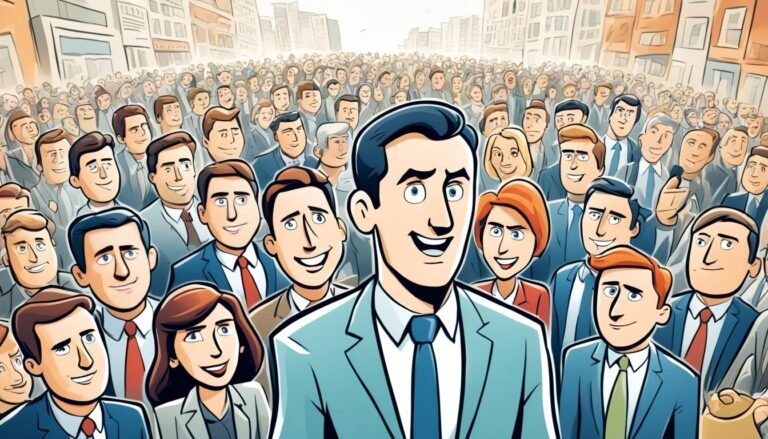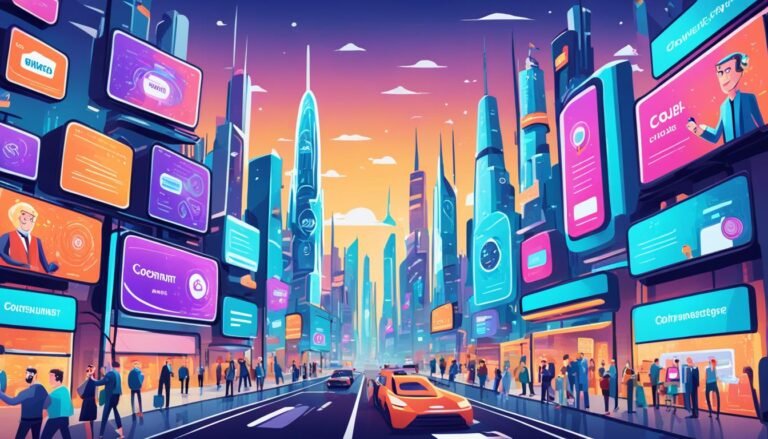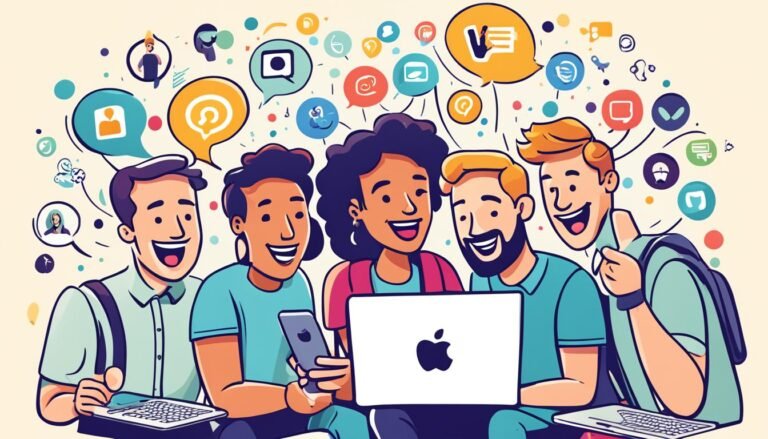Behavioral Economics in Marketing
Are you tired of traditional marketing techniques failing to yield the desired results? Are you ready to unlock the secrets of consumer behavior and revolutionize your marketing strategies?
Look no further than the fascinating field of behavioral economics. By understanding the irrational and often unconscious factors that drive consumer decision-making, you can tap into powerful psychological principles to shape and influence consumer behavior.
From the power of anchoring and scarcity to the influence of social proof and loss aversion, behavioral economics offers a wealth of insights that can give your marketing efforts a competitive edge.
So, buckle up and get ready to discover the hidden forces that drive consumer choices, because this is a journey you won't want to miss.
Key Takeaways
- Incorporating anchoring techniques in marketing can influence consumer perception of value and lead to increased sales and customer satisfaction.
- Scarcity marketing leverages the scarcity principle to create a sense of exclusivity and urgency, motivating consumers to make a purchase and increasing sales and customer engagement.
- Testimonials, reviews, and influencer endorsements provide social validation and increase trust in a product or service, leading to increased trust and likelihood of purchasing.
- Loss aversion, the fear of missing out (FOMO), and the fear of loss are powerful influences on consumer behavior and decision-making, and marketers can tap into these factors to shape consumer perception and drive sales.
The Power of Anchoring
Incorporating the principle of anchoring in your marketing strategies can have a profound impact on consumer behavior, driving higher sales and increased customer engagement. The power of suggestion plays a crucial role in this concept, as it taps into the psychology of pricing and influences the way consumers perceive value.
Pricing psychology is a fascinating field that highlights how consumers perceive prices and make purchasing decisions. By strategically using anchoring techniques, marketers can influence consumers' perception of the value of a product or service. For example, presenting a higher-priced option first can anchor the consumer's expectations and make a slightly lower-priced option seem like a great deal. This can lead to increased sales and customer satisfaction.
Research in pricing psychology has shown that consumers tend to rely heavily on the first piece of information they receive when making decisions. By leveraging this cognitive bias, marketers can effectively shape consumers' perceptions and guide their purchasing choices. Anchoring not only influences the initial purchase decision but also affects subsequent decisions, such as cross-selling or upselling.
The Scarcity Effect
By understanding the power of anchoring in marketing and its influence on consumer behavior, you can now explore another powerful concept that drives purchasing decisions – the scarcity effect. Scarcity marketing is a strategy that leverages the scarcity principle, which states that people perceive items or opportunities as more valuable when they're limited or in short supply.
Research has shown that scarcity marketing can significantly impact consumer behavior. When consumers believe that a product or service is scarce, they experience a fear of missing out (FOMO) and are more motivated to make a purchase. Scarcity creates a sense of urgency, prompting consumers to act quickly before the opportunity is gone.
Scarcity marketing can be implemented in various ways. One effective method is to limit the availability of a product or offer for a limited time. This creates a sense of exclusivity and encourages consumers to take immediate action. Another approach is to highlight the limited quantity of a product, emphasizing that it may run out soon.
Incorporating scarcity marketing into your strategy can lead to increased sales and customer engagement. By creating a perception of scarcity, you tap into the psychological factors that drive consumer decision-making.
The Influence of Social Proof
Social proof is a powerful psychological phenomenon that can greatly influence consumer decision-making. When people see others engaging in certain behaviors or making particular choices, they're more likely to follow suit. This concept of social validation plays a significant role in shaping consumer behavior.
Here are three ways in which social proof can influence your decision-making:
- Testimonials and reviews: Seeing positive reviews or testimonials from other customers can provide social validation and increase your trust in a product or service. When you see that others have had a positive experience, you're more likely to believe that you'll also have a positive experience.
- Influencer endorsements: Influencers have a significant impact on consumer behavior. When you see an influencer you admire endorsing a product or service, it creates a sense of social proof. You're more likely to trust their recommendation and consider purchasing the product or service yourself.
- Social media trends: Social media platforms are filled with trends and popular choices. When you see others posting about a particular product or service, it creates a sense of FOMO (fear of missing out). You might feel compelled to join the trend and make the same choice as others.
The Impact of Loss Aversion
Are you aware of the power of loss aversion?
It's a psychological phenomenon that suggests people are more motivated to avoid losses than to achieve gains. Research has shown that the pain of losing something is twice as strong as the pleasure of gaining something of equal value.
This insight into human behavior can be leveraged in marketing strategies to create a sense of urgency, scarcity, and fear of missing out, ultimately driving consumers to take action.
Loss Aversion Explained
Have you ever wondered how loss aversion can significantly impact consumer decision-making and shape marketing strategies?
Loss aversion is a cognitive bias in decision making where people tend to strongly prefer avoiding losses over acquiring gains. This powerful psychological phenomenon has profound implications for consumer behavior and marketing efforts.
Here are three ways loss aversion can impact consumer decision-making and shape marketing strategies:
- Fear of Missing Out (FOMO): Loss aversion can drive consumers to make impulsive purchases to avoid missing out on limited-time offers or exclusive deals.
- Anchoring Effect: Loss aversion can influence consumers' perception of value, making them more likely to choose the option that minimizes potential losses, even if it means paying a higher price.
- Free Trials and Money-Back Guarantees: Offering free trials or money-back guarantees can alleviate consumers' fear of making a bad purchase decision, reducing their perceived losses and increasing the likelihood of conversion.
Understanding the impact of loss aversion on consumer behavior can help marketers design more effective strategies that tap into this powerful cognitive bias. By leveraging loss aversion, marketers can create compelling offers, mitigate consumer fears, and drive purchasing decisions.
Psychological Impact of Loss
Loss aversion has a profound psychological impact on individuals, shaping their decision-making processes and influencing their attitudes towards potential losses. This phenomenon, rooted in cognitive dissonance and prospect theory, reveals the powerful influence of loss on our behavior.
Research has shown that people are more motivated to avoid losses than to acquire gains, with the pain of losing being twice as strong as the pleasure of gaining. This aversion to loss drives individuals to make irrational decisions, clinging onto investments or possessions even when they're no longer beneficial.
Marketers can capitalize on this psychological impact by highlighting the potential losses that consumers may face if they don't purchase their product or service. By framing their offerings in terms of loss prevention rather than gain acquisition, marketers can tap into the inherent fear of loss and effectively influence consumer behavior.
Marketing Strategies for Loss Aversion
To effectively leverage the psychological impact of loss aversion in marketing, businesses must employ innovative strategies that tap into consumers' innate fear of missing out on potential gains. By understanding how loss aversion influences consumer behavior, companies can create marketing campaigns that trigger a sense of urgency and drive purchasing decisions.
Here are three powerful strategies that incorporate behavioral economics in pricing strategies and capitalize on the impact of loss aversion:
- Limited-time offers: Create a sense of scarcity by offering time-limited promotions or discounts. This taps into consumers' fear of missing out on a good deal, prompting them to take immediate action.
- Loss framing: Presenting products or services in terms of what consumers stand to lose if they don't make a purchase can be highly effective. Highlighting the potential gains that customers might miss out on can motivate them to act.
- Free trials with expiration dates: Offering free trials with a clear expiration date not only allows customers to experience the product or service but also creates a fear of losing out on the benefits once the trial period ends.
The Role of Cognitive Biases
As a marketer, you must understand the role of cognitive biases in consumer decision-making. These biases are inherent in the human mind and can greatly influence purchasing behavior.
By recognizing and leveraging these biases, you can craft marketing campaigns that effectively appeal to consumers' heuristics and biases, ultimately driving higher sales and customer engagement.
The key is to use data-driven insights to identify and understand the specific cognitive biases that are most prevalent among your target audience, and then tailor your marketing strategies accordingly.
Decision-Making Biases
Have you ever wondered why you make certain decisions, even when they may not seem rational? Well, the answer lies in decision-making biases, specifically the anchoring bias and scarcity bias. These biases play a significant role in shaping our choices and can often lead us to make irrational decisions.
Here are three examples of how these biases can influence our decision-making:
- Anchoring Bias: Imagine you're shopping for a new laptop and you come across one that's priced at $2,000. Even if you find another laptop with similar features for $1,500, you might still be inclined to choose the more expensive option because your initial anchor point was set at $2,000.
- Scarcity Bias: When we perceive something as scarce or limited in quantity, we tend to place a higher value on it. For example, if you see a limited edition item with only a few units remaining, you may feel a sense of urgency to purchase it, even if you don't necessarily need it.
- Confirmation Bias: We've a tendency to seek out information that confirms our existing beliefs and ignore or discount information that contradicts them. So, when faced with a decision, we're more likely to choose the option that aligns with our preconceived notions.
Understanding these biases can help marketers leverage them in their strategies to influence consumer behavior. By creating a sense of scarcity or anchoring prices strategically, marketers can nudge consumers towards making particular choices.
However, it's essential for individuals to be aware of these biases and consider them when making decisions to avoid falling into irrational traps.
Influence of Heuristics
When understanding the influence of heuristics on decision-making, it becomes evident that cognitive biases play a crucial role in shaping our choices and guiding our behavior. Two important cognitive biases that affect our decision-making process are the influence of priming and the role of defaults.
Priming refers to the subconscious activation of certain thoughts or beliefs that influence our subsequent behavior. Marketers often use priming techniques to evoke certain emotions or associations in consumers, thereby influencing their decision-making process. For example, a study found that participants who were primed with words related to elderly people walked slower than those who weren't primed, demonstrating the power of priming in shaping our behavior.
Defaults, on the other hand, are the pre-set options or choices that are automatically selected if no alternative is chosen. Research has shown that defaults have a significant impact on our decision-making process. For example, organ donation rates are higher in countries where the default option is to be an organ donor, compared to countries where individuals have to actively opt-in.
Understanding how these cognitive biases, such as priming and defaults, influence our decision-making process is crucial for marketers. By leveraging these biases, marketers can design effective strategies to nudge consumers towards desired choices and behaviors.
The Framing Effect in Marketing
Harness the power of the framing effect in your marketing strategy to strategically shape consumer perception and drive desired behaviors. The framing effect, a cognitive bias identified by behavioral economists, highlights how the way information is presented can significantly influence decision-making. By leveraging this effect, you can optimize your marketing efforts to achieve maximum impact.
Here are three compelling applications of the framing effect in marketing:
- Pricing strategies: Presenting prices in a favorable light can greatly impact consumer perception. For example, framing a product as 'only $99' instead of 'almost $100' creates the perception of a better deal, enticing customers to make a purchase.
- Messaging and communication: How you frame your marketing messages can greatly influence how consumers perceive your brand. By highlighting the benefits and positive outcomes of using your product or service, you can create a more favorable perception in the minds of your target audience.
- Social proof and testimonials: Frame customer testimonials and social proof in a way that highlights the positive experiences and outcomes associated with your brand. This can help build trust and credibility, encouraging potential customers to choose your product or service over competitors.
The Decoy Effect: A Marketing Strategy
Are you looking for effective marketing strategies to boost your sales? Look no further than the decoy pricing strategy.
By strategically introducing a third option that's designed to make the other options more appealing, you can influence consumer choices and drive up sales.
Choice architecture plays a crucial role in this strategy, as the way options are presented can significantly impact consumer decision-making.
Don't underestimate the power of the decoy effect in your marketing efforts.
Decoy Pricing Strategy
The Decoy Pricing Strategy, a powerful marketing tool, effectively influences consumer decision-making by strategically presenting options that guide them towards a desired choice. By utilizing decoy pricing techniques, businesses can manipulate prices to steer consumers towards a specific product or service.
Here are three reasons why the Decoy Pricing Strategy is a game-changer in marketing:
- Enhanced Perceived Value: The presence of a decoy option can make the desired option seem more attractive in comparison, increasing its perceived value.
- Anchoring Effect: By introducing a high-priced decoy, businesses can anchor consumers' expectations, making the desired option appear more reasonably priced.
- Decision Simplification: The Decoy Pricing Strategy simplifies decision-making for consumers, as it provides a clear contrast between options, making it easier for them to make a choice.
With its ability to nudge consumer behavior and drive sales, the Decoy Pricing Strategy is a must-have for any marketer looking to optimize their pricing strategies.
Choice Architecture Influence
Utilizing the principles of choice architecture, marketers can strategically leverage the Decoy Effect to influence consumer decision-making and drive desired outcomes. This powerful marketing strategy takes advantage of two cognitive biases: choice overload and default bias.
Choice overload occurs when consumers are presented with too many options, leading to decision paralysis. By introducing a decoy option, marketers can simplify the decision-making process and nudge consumers towards their desired choice.
Default bias, on the other hand, refers to the tendency for individuals to stick with the default option presented to them. Marketers can use this bias to their advantage by positioning their preferred option as the default choice, making it more likely for consumers to choose it.
To better understand the influence of the Decoy Effect, consider the following table:
Option | Price | Features
— | — | —
Option A | $50 | Basic
Option B | $75 | Basic + Extra
Option C (Decoy) | $80 | Basic + Extra + Premium
In this example, Option C is strategically placed as a decoy to make Option B appear more appealing. The higher price of Option C makes Option B seem like a better value, leading consumers to choose Option B more often.
The Endowment Effect and Consumer Behavior
When you own something, whether it's a car, a house, or even a simple pen, you naturally place a higher value on it than if you didn't own it at all. This phenomenon is known as the endowment effect and it has a significant impact on consumer behavior. Understanding how the endowment effect influences consumer preferences and pricing strategies can give marketers a powerful tool to leverage.
Here are three ways the endowment effect affects consumer behavior:
- Ownership increases perceived value: When consumers own a product, they tend to attach sentimental value to it. This emotional attachment can lead to a higher willingness to pay and a resistance to parting with the item. As a marketer, you can capitalize on this by highlighting the ownership experience in your marketing messages.
- Loss aversion drives purchasing decisions: The endowment effect is closely tied to loss aversion, the idea that people are more motivated to avoid losses than to acquire gains. This means that consumers are more likely to make a purchase to prevent losing a product they already own. By emphasizing potential losses, such as limited availability or time-limited offers, you can create a sense of urgency and drive sales.
- Personalization enhances perceived value: The endowment effect is amplified when a product is personalized or customized. Consumers feel a stronger sense of ownership and connection to a product that's tailored to their preferences. By offering customization options, you can increase the perceived value of your product and create a stronger emotional bond with your customers.
The Role of Emotions in Decision Making
Emotions play a crucial role in shaping our decision-making process, driving us to take action and influencing the choices we make. This is particularly evident in the realm of branding, where emotional branding strategies have become a powerful tool for marketers.
Research has shown that emotions have a significant impact on consumer behavior, with studies indicating that emotions are even more influential than rational thinking when it comes to making purchasing decisions.
Emotional branding strategies focus on creating a strong emotional connection between consumers and a brand. By appealing to consumers' emotions, brands can create a sense of loyalty and trust, which can lead to increased customer satisfaction and repeat purchases. In fact, a study conducted by the Harvard Business Review found that emotionally engaged customers are more valuable to a brand than those who are merely satisfied.
One example of a successful emotional branding strategy is the Coca-Cola 'Open Happiness' campaign. The campaign utilized heartwarming commercials and uplifting messages to create a positive emotional association with the brand. This emotional connection not only increased brand loyalty among consumers but also drove sales and revenue growth for Coca-Cola.
The Importance of Nudging in Marketing
Nudging is a powerful and effective marketing technique that subtly influences consumer behavior towards desired actions. By understanding the power of default settings and the impact of priming, marketers can strategically design nudges that lead consumers to make choices that align with their goals. Here are three compelling reasons why nudging is crucial in marketing:
- Default settings: People tend to stick with the default option presented to them. By strategically setting default choices that align with the desired outcome, marketers can nudge consumers towards the desired action without them even realizing it. For example, by setting the default option for a newsletter subscription as 'opt-in' instead of 'opt-out,' marketers can significantly increase the number of subscribers.
- Priming: Our decisions are often influenced by the context or stimuli around us. By priming consumers with subtle cues or reminders related to a specific product or service, marketers can increase the likelihood of consumers choosing that option. For instance, displaying images of refreshing drinks near the checkout counter can prime customers to purchase a beverage.
- Behavioral consistency: Once people commit to a certain behavior, they're more likely to continue with it in the future. By encouraging small initial commitments, marketers can nudge consumers towards larger actions later on. For example, offering a free trial for a product can nudge users to try it out and potentially convert into paying customers.
Conclusion
Congratulations! You've just unlocked the secret to revolutionizing your marketing strategies. By harnessing the power of behavioral economics, you can tap into the subconscious minds of consumers and guide their decision-making process.
From the persuasive force of anchoring and scarcity, to the compelling influence of social proof and cognitive biases, these techniques have the potential to skyrocket your sales.
So go ahead, unleash the power of behavioral economics and watch as your marketing efforts soar to new heights! It's like adding rocket fuel to your success.







